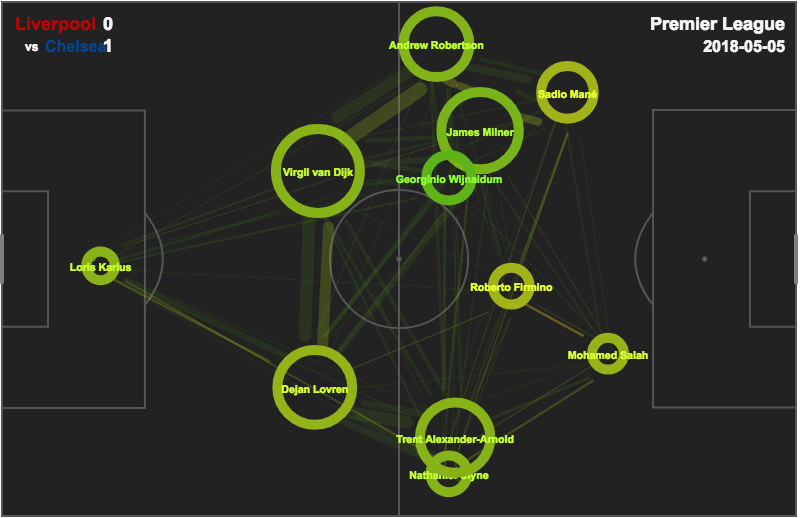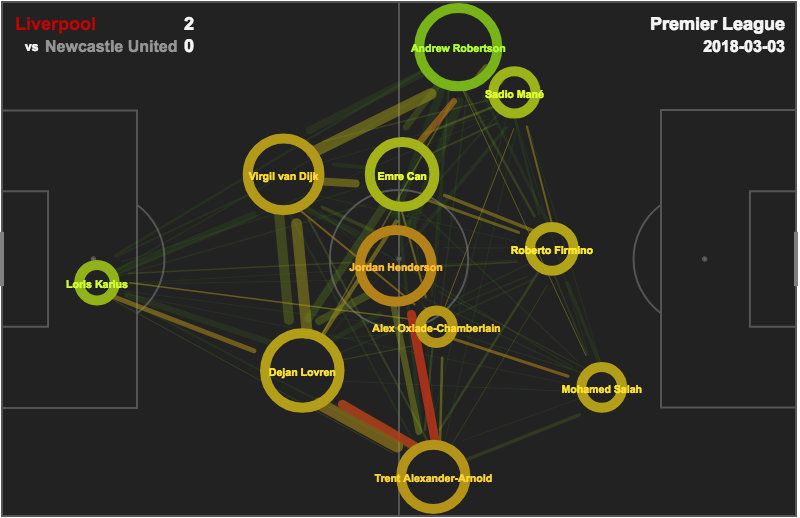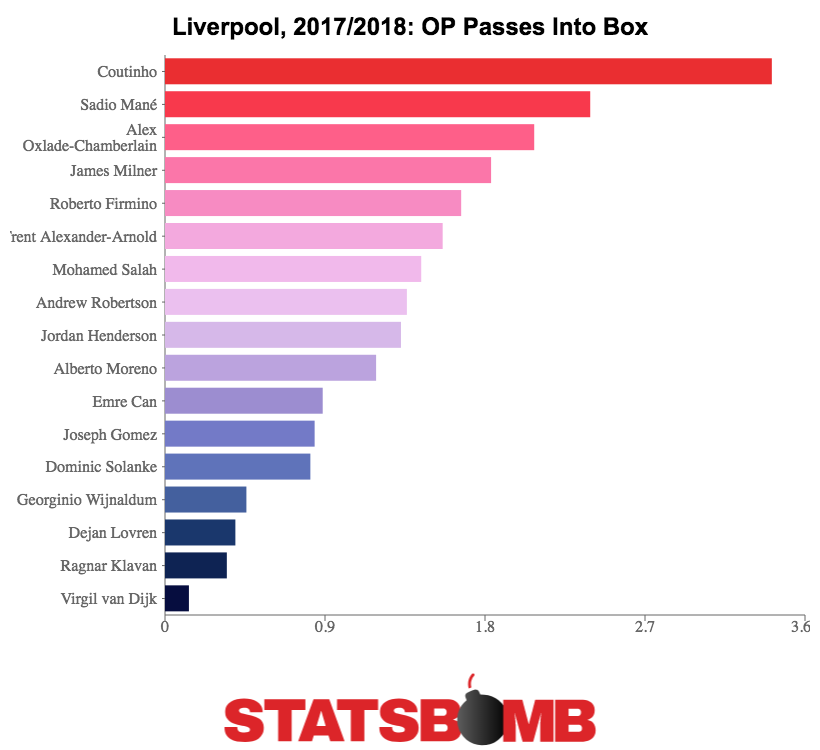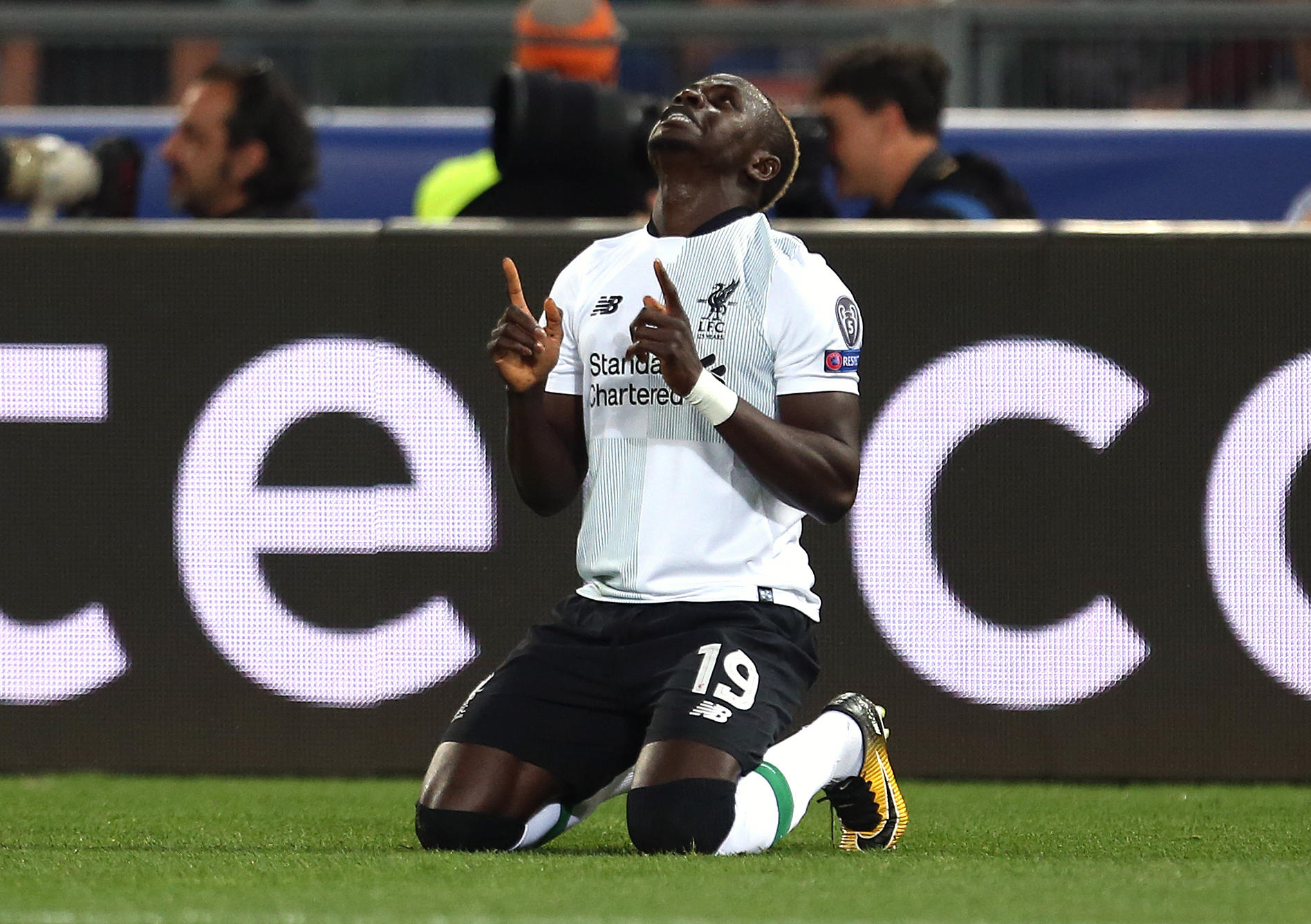Reaching their first World Cup since the famous quarter final run of 2002, Senegal have produced probably their strongest squad for some time this summer. Napoli’s Kalidou Koulibaly offers a blend of physical presence and technical guile at central defence. Idrissa Gueye of Everton brings boundless energy in midfield. Higher up the pitch, Monaco’s Keita Baldeis a dangerous dribbling threat matched with strong expected goal and assist numbers, while Ismaïla Sarr at Rennes is an exciting young talent out wide. But with all due respect to those players, if there is a star of this show, it is, of course, Liverpool’s Sadio Mané.
Mané’s Early Club Career
After getting his first senior football at a Metz side then still in Ligue 2 in France, Mané made the move to Roger Schmidt’s Red Bull Salzburg in 2012. If you know anything about Roger Schmidt, it’s probably that he favours a very fast, very attacking form of counter-pressing, and this suited Mané down to the ground. In Salzburg’s title winning 2013-14 season, Mané generated an excellent 0.89 non-penalty goals and assists per 90 minutes. He nominally played on the left of a 4-4-2 but had licence to cause problems in the box in Schmidt’s hectic system. His excellent form earned him a move to Southampton the following summer, as part of their rebuild as Ronald Koeman replaced Mauricio Pochettino and a number of long serving players were sold on for profit. While Mané had the perfect coach for him at Salzburg in Schmidt and his high pressing game, Ronald Koeman’s tenure at St Mary’s Stadium was somewhat less ideal. Koeman prefers a more conventional defensive structure,, which meant asking Mané to drop back into a conservative shape out of possession rather than aiming to win the ball back high up the pitch. Meanwhile, the Dutchman’s attacking style was heavily focused on crossing. His Southampton side generated more key passes from crosses than any other team in the Premier League, despite only having the seventh most key passes in total. This poor stylistic fit, along with Koeman’s penchant for switching between different formations, denying Mané a familiar role, constrained the Senegalese international somewhat. Still, he managed to put up a respectable 0.58 expected goals and assists per 90 in the 2015/16 season and followed the well worn path from Southampton to Liverpool.
Mané at Liverpool
Mané was the ideal signing for Liverpool. When he took over the previous October Jürgen Klopp inherited a side with some great pressers (Roberto Firmino, Adam Lallana) and excellent creative passing (Philippe Coutinho), but little in the way of genuine speed. Playing on the right of a 4-3-3 system, Mané offered a threat of pace in behind the defensive line that had previously been lacking. With Coutinho on the left preferring to cut inside as a playmaker, and Firmino playing as a false nine rather than someone on the last shoulder of the defence, Mané had a clear role as the out ball, generally starting in a narrow position on the right and using his acceleration to beat defenders. His position is pretty clear when watching a highlight reel from his 2016/17 season. He starts on the right of a front three, even if Liverpool’s fluid and narrow system led to him ending up in a more central area. Mané’s expected goals and assists were not dramatically different in 16/17 from his time at Southampton (0.56 per 90, versus 0.58 in 15/16, per Understat), but much of his value came more in the direct option he gave for Klopp’s transition play. His xGChain in that season was the highest of any Liverpool player, implying a level of reliance. And indeed, when Mané was unavailable for stretches of the second half of the season, either through AFCON duty or injuries, Liverpool’s system looked less threatening. Playing either a less dynamic player on the right or an altered diamond system without wingers, Liverpool were forced to play predominantly in front of the opposition defensive line, with less of an option to counter with speed. This reliance on Mané was clearly noted by the club and as such they opted to purchase an additional pacey winger in some Egyptian bloke called Mohamed Salah. You may have heard about him recently. Salah’s obvious qualities made him a guaranteed starter this season, and his abilities to cut inside on his stronger left foot necessitated starting him on the right. This has required Mané to move over to the left, as can be seen clearly in StatsBomb’s pass maps. 
 Similarly, when looking at a heatmap of his defensive activity, we can see that his pressing work is now overwhelmingly focused on the left flank.
Similarly, when looking at a heatmap of his defensive activity, we can see that his pressing work is now overwhelmingly focused on the left flank.  While this hasn’t affected Mané’s own performance too much, it has made him feel somewhat less important to the Liverpool team. Mané’s opposite winger was previously Coutinho, who complemented his skill set. Now, he now has Salah looking to do many of the same things he aims to do. Add in Andy Robertson overlapping him from left back and providing another outlet and before the sale of Philippe Coutinho in January there was a genuine case that Liverpool’s best side had Mané on the bench. Fortunately for the Senegalese, however, Coutinho was sold, and this led to Mané taking on more playmaking responsibilities. His 2.40 open play passes into the box per 90 is the highest of Liverpool players still at the club (small sample sizes excluded), as seen in the graphic below, showing his value in progressing the ball into dangerous areas. This is probably the most underrated aspect of Mané’s game, with his performances for Liverpool showing excellent link-up play with fellow forwards Salah and Firmino.
While this hasn’t affected Mané’s own performance too much, it has made him feel somewhat less important to the Liverpool team. Mané’s opposite winger was previously Coutinho, who complemented his skill set. Now, he now has Salah looking to do many of the same things he aims to do. Add in Andy Robertson overlapping him from left back and providing another outlet and before the sale of Philippe Coutinho in January there was a genuine case that Liverpool’s best side had Mané on the bench. Fortunately for the Senegalese, however, Coutinho was sold, and this led to Mané taking on more playmaking responsibilities. His 2.40 open play passes into the box per 90 is the highest of Liverpool players still at the club (small sample sizes excluded), as seen in the graphic below, showing his value in progressing the ball into dangerous areas. This is probably the most underrated aspect of Mané’s game, with his performances for Liverpool showing excellent link-up play with fellow forwards Salah and Firmino. 
Mané for Senegal
If Mané was at risk of being undervalued at club level this season, Senegal’s system doesn’t pose that problem. Senegal are nominally playing him as the number ten in a straightforward 4-2-3-1 system. Being more of a direct threat than a playmaker in the Mesut Ozil mould, Mané tends to interpret the position by often moving right alongside the striker to make the team look more like a 4-4-2 at times. This has the consequence of making Senegal look flat and limited in terms of passing options, with some of their brightest moments coming when Mané actually drops slightly deeper and is able to use his decent vision to pick out some of the fast outlets around him. In the warm up game against Croatia, Senegal were mostly on the back foot, with Croatia and their set of technical midfielders unsurprisingly dominating possession. This would be fine for Senegal if the side had been better able to keep a compact shape, but they were consistently unsure about whether to have Mané and the other forwards press high or to drop into a deep defensive block. This is obviously something that will have to be improved upon if they want to surprise anybody at the World Cup. In terms of their attacking options, Mané’s role may be the most important question. As previously mentioned, his creative passing is stronger than it is often given credit for, and could be especially useful in this Senegal side. The team has a lot of pace and dribbling talent, with Ismaïla Sarr in particular causing problems on the right flank. If Mané is more explicitly the creative hub rather than his current role as both creator and scoring forward, this could give the side a more cohesive attack, rather than being too reliant on individual quality. A potential positive for Senegal is in the opposition. Both Poland and Colombia are top-heavy in terms of the talent distribution in their squads, while Japan usually play a possession game in tournaments. This could provide Senegal ample opportunities for the pace of their forward line in counter attacks, and Mané can be the key figure. Provided he is given enough of a defined role, Sadio Mané has the chance to really shine in Russia. (Header image courtesy of the Press Association)
